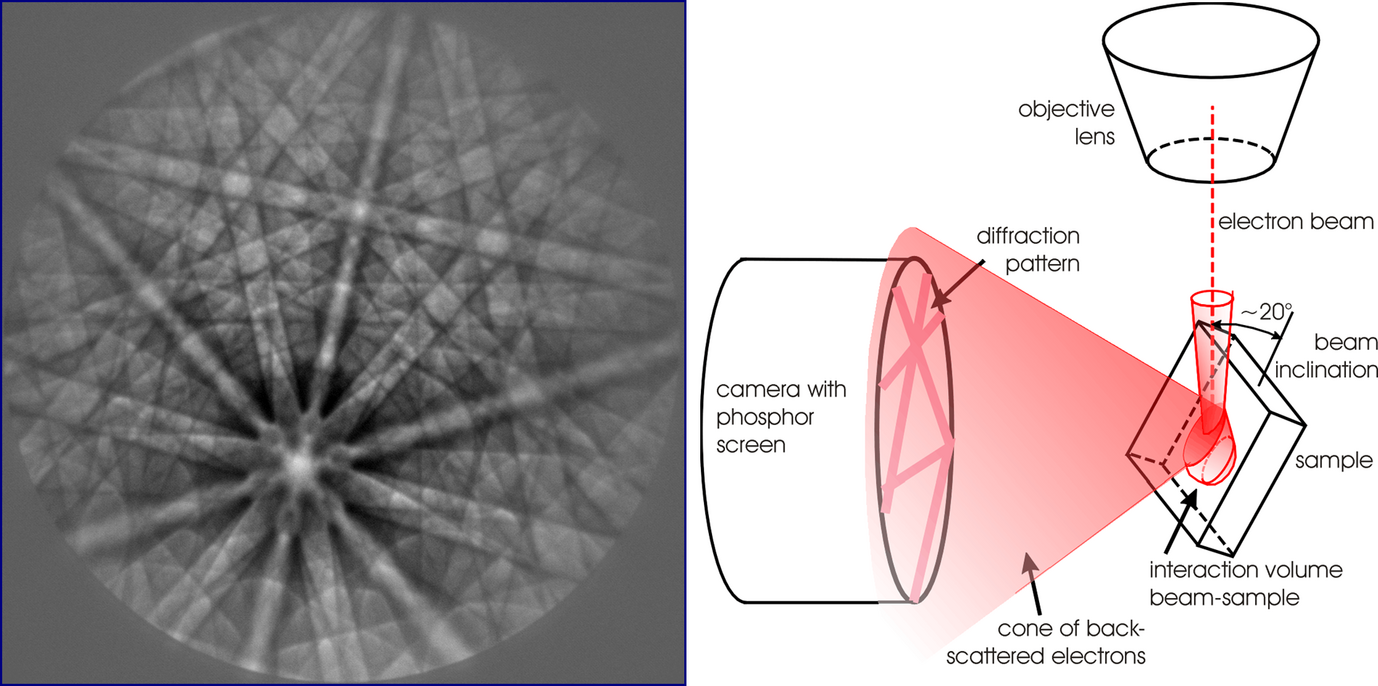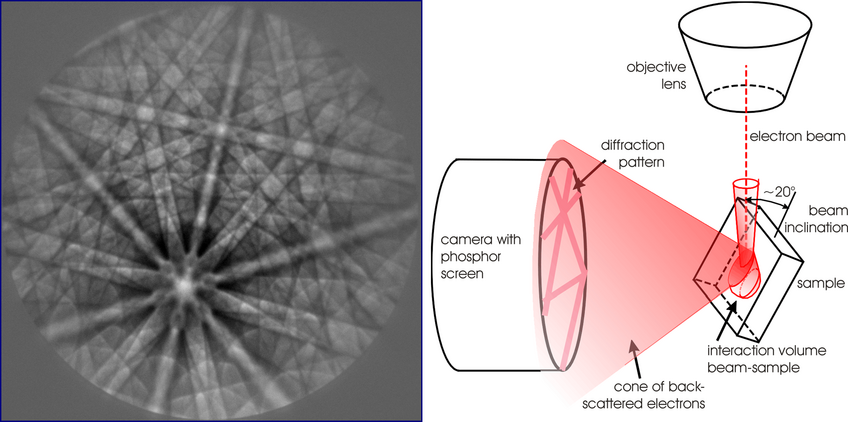Electron backscatter diffraction - EBSD
Electron backscatter diffraction is an electron diffraction technique in scanning electron microscopy used to obtain information about crystallographic phase, crystal orientation and defect densities.

The left side figure shows a typical EBSD pattern. The pattern consists of straight bright bands, so called Kikuchi bands, which have a direct relation to the lattice planes of the diffracting crystal: the centre line of each of the bands directly corresponds to the gnomonic projection of the lattice planes. The width of the Kikuchi band is approximately proportional to the Bragg angle of electron diffraction on the related lattice plane. The band intensity profile corresponds to the dynamic electron diffraction intensity obtained in a rocking experiment across the related lattice plane.
From the geometry of the Kikuchi bands in the pattern the crystallographic phase and orientation can be determined. The band profiles contain information on the local defect densities (in particular on dislocation densities). These information can be obtained in a highly automated manner by computer software which then displays the basis of so called EBSD-based orientation microscopy (->ORM).
To obtain EBSD patterns a crystalline sample with planar and artefact free surface is placed in the scanning electron microscope and typically tilted to 70° as shown on the right side. An EBSD detector, consisting of a phosphor screen observed by a highly light sensitive camera, is placed close to the sample. When a stationary electron beam is placed on a single crystalline area of the sample surface an EBSD pattern appears on the detector.
